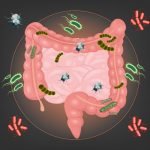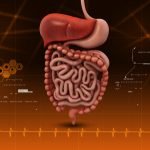The Role of Advanced Glycation End Products in CVD
Docere
Gaetano Morello, ND
Glycation is a nonenzymatic reaction between sugars, such as glucose and fructose, and biological proteins, resulting in the production of advanced glycation end products (AGEs). These compounds accumulate in the body throughout one’s life and can contribute to inflammation, cellular dysfunction, and disease, particularly cardiovascular disease (CVD).1 A number of studies in the medical literature have demonstrated a link between the development of AGEs and CVD and related conditions.
Glycation and Atherosclerosis
Atherosclerosis, commonly known as hardening of the arteries, is a major cause of morbidity and mortality worldwide; people with diabetes are at particularly increased risk of developing coronary heart disease. Increased concentrations of reducing sugars and reactive oxygen species cause advanced glycation of proteins, a causal factor contributing to complications of diabetes mellitus. Glycated proteins alter protein structure and function, and through ligation with their receptors, can lead to significant vascular damage. The most reactive glycation precursors are alpha-oxoaldehydes such as methylglyoxal (MG), found at increased levels in the blood of diabetics.2 It is believed that the inflammatory action of glycated proteins, including those with MG adducts, through their receptor, RAGE, is key in triggering plaque formation.
In a 2009 study,3 researchers evaluated plasma levels of the AGE, carboxymethyl (lysine)-adducts (CML), and sRAGE (the soluble form of the receptor) by enzyme-linked immunosorbent assay, as well as tissue levels (tAGEs and tRAGE) by immunohistochemistry, in carotid plaque tissue from endarterectomy in 29 nondiabetic patients. At the time of surgery, 10 patients were asymptomatic and 19 had symptoms. The researchers found that plasma levels of sRAGE were higher in symptomatic patients compared with asymptomatic patients. In patients with symptoms, plasma sRAGE levels correlated positively with CML, C-reactive protein, and fibrinogen, whereas no correlation was observed in asymptomatic patients,. Additionally, tAGEs and tRAGE were positively correlated only in symptomatic patients. The researchers concluded that plasma levels of sRAGE are higher in patients with symptomatic carotid atherosclerosis than in those with asymptomatic carotid atherosclerosis and that higher levels of sRAGE in symptomatic patients may indicate a greater degree of vascular inflammation.3
In another study,4 researchers used data from the Dallas Heart Study to evaluate the association between plasma levels of sRAGE and coronary artery calcium (CAC) in 2571 people, using complete imaging and sRAGE data. The researchers observed an inverse graded association between CAC and sRAGE quartiles, with a CAC prevalence of 28.5% in the first quartile, compared with 15.7% in the fourth quartile. The associations between CAC and sRAGE levels in the first and second quartiles (vs fourth quartile) remained statistically significant after multivariable adjustment (adjusted odds ratio 1.71 [95% CI 1.2–2.4] and 1.5 [1.0–2.1], respectively). The researchers concluded that sRAGE is inversely associated with coronary atherosclerosis, and they suggested further investigation into sRAGE’s potential role in atherosclerosis, in terms of both prognosis and therapeutics.
Glycation and Cardiovascular Disease
A number of studies have supported the link between AGEs and CVD risk in both diabetic and nondiabetic patients. AGEs are believed to play a crucial role in the development and progression of CVD in diabetics. Through the crosslinking of intracellular and extracellular matrix proteins and the modulation of cellular function via binding to RAGEs, AGEs are able to modify the function, structure, and mechanical properties of bodily tissues.5
In a study published in 2011 in Diabetes Care,6 researchers investigated the association of plasma levels of AGEs with CVD and all-cause mortality in type 1 diabetics. They followed 169 patients with diabetic nephropathy and 170 with persistent normoalbuminuria who did not have CVD at the start of the study. Concentrations of AGEs such as N(ε)-(carboxymethyl)lysine, N(ε)-(carboxyethyl)lysine, and pentosidine were measured at baseline; the median follow-up duration was 12.3 years. During follow-up, 82 patients (24.2%) died and 85 patients (25.1%) suffered a fatal (n = 48) and/or nonfatal (n = 53) CVD event. In patients with higher baseline concentrations of AGEs, the incidence of CVD (fatal and nonfatal) and of all-cause mortality increased independently of the usual CVD risk factors: hazard ratios = 1.30 (95% CI = 1.03–1.66) and 1.27 (1.00–1.62), respectively. The researchers concluded that AGEs may partially explain the increased CVD and mortality observed in people with type 1 diabetes.
In a prospective cohort study published in 2009,7 researchers sought to determine whether older adults (≥65 years) with high plasma CML are at higher risk of all-cause and CVD mortality. They took anthropometric, clinical and vital status measures of 1,013 adults living in Tuscany, Italy. During 6 years of follow-up, 227 of the participants died, including 105 who died from CVD. Participants with plasma CML in the highest tertile had greater all-cause and CVD mortality compared to those in the lower 2 tertiles. This was found to be true regardless of whether patients had diabetes mellitus.
In another study of 559 women (≥ 65 years),8 researchers evaluated the relationship between mortality and serum AGEs, total RAGE (sRAGE) and endogenous secretory RAGE (esRAGE). During the 4.5 year-follow-up, 123 women died, including 54 with CVD. After adjusting for age, race, body mass index, and renal insufficiency, researchers found that serum CML, sRAGE, and esRAGE predicted CVD mortality in both diabetic and non-diabetic women.
Glycation Prevention
It is clear from these studies and others that there is a direct correlation between AGEs and CVD risk. Given the role of AGEs in inflammation and associated disease states, AGEs are an obvious target for interventions to prevent CVD and significantly limit the contributing factors to CVD in diabetes. A key intervention in preventing glycation is good nutrition. Research has demonstrated the inhibitory properties of compounds such as ginger, cinnamon, cumin, black pepper and green tea,9 and supplementation with vitamins B1 and C has also shown preventive effects.10,11 The literature also contains examples of the preventive effects of chromium and biotin,12-14 carnosine,15,16 and benfotiamine.17,18 Other natural strategies to prevent glycation include limiting one’s intake of grilled and broiled proteins (best to steam or simmer them in liquid), avoiding processed foods, and increasing one’s consumption of fruits and vegetables.
 Gaetano Morello, ND is a naturopathic physician practicing in West Vancouver, Canada. He received his Bachelor of Science degree from the University of British Columbia and his Doctor of Naturopathic Medicine from Bastyr University of Natural Health Sciences in Seattle, Washington. Since 1991, Dr. Morello has been training and educating physicians, pharmacists, and health experts on the scientific use of natural medicines in the fields of cardiology, immunology, gastroenterology, anti-aging, and detoxification. Contributing author to the authoritative text on alternative medicine, A Textbook of Natural Medicine, he is also author of The Fiber Miracle. Dr. Morello is an active member of the Integrative Therapeutics advisory board, contributing to their new product research and development, as well as professional education.
Gaetano Morello, ND is a naturopathic physician practicing in West Vancouver, Canada. He received his Bachelor of Science degree from the University of British Columbia and his Doctor of Naturopathic Medicine from Bastyr University of Natural Health Sciences in Seattle, Washington. Since 1991, Dr. Morello has been training and educating physicians, pharmacists, and health experts on the scientific use of natural medicines in the fields of cardiology, immunology, gastroenterology, anti-aging, and detoxification. Contributing author to the authoritative text on alternative medicine, A Textbook of Natural Medicine, he is also author of The Fiber Miracle. Dr. Morello is an active member of the Integrative Therapeutics advisory board, contributing to their new product research and development, as well as professional education.
References:
- Zieman S, Kass D. Advanced glycation end product cross-linking: pathophysiologic role and therapeutic target in cardiovascular disease. Congest Heart Fail. 2004;10(3):144-9; quiz 150-151.
- Price CL, Knight SC. Advanced glycation: a novel outlook on atherosclerosis. Curr Pharm Des. 2007;13(36):3681-3687.
- Basta G, Castagnini M, Del Turco S, et al. High plasma levels of the soluble receptor for advanced glycation endproducts in patients with symptomatic carotid atherosclerosis. Eur J Clin Invest. 2009;39(12):1065-1072.
- Lindsey JB, de Lemos JA, Cipollone F, et al. Association between circulating soluble receptor for advanced glycation end products and atherosclerosis: observations from the Dallas Heart Study. Diabetes Care. 2009;32(7):1218-1220.
- Hegab Z, Gibbons S, Neyses L, Mamas MA. Role of advanced glycation end products in cardiovascular disease. World J Cardiol. 2012;4(4):90-102..
- Nin JW, Jorsal A, Ferreira I, et al. Higher plasma levels of advanced glycation end products are associated with incident cardiovascular disease and all-cause mortality in type 1 diabetes: a 12-year follow-up study. Diabetes Care. 2011;34(2):442-447.
- Semba RD, Bandinelli S, Sun K, et al. Plasma carboxymethyl-lysine, an advanced glycation end product, and all-cause and cardiovascular disease mortality in older community-dwelling adults. J Am Geriatr Soc. 2009;57(10):1874-1880.
- Semba RD, Ferrucci L, Sun K, et al. Advanced glycation end products and their circulating receptors predict cardiovascular disease mortality in older community-dwelling women. Aging Clin Exp Res. 2009;21(2):182-190.
- Saraswat M, Reddy PY, Muthenna P, Reddy GB. Prevention of non-enzymic glycation of proteins by dietary agents: prospects for alleviating diabetic complications. Br J Nutr. 2009;101(11):1714-1721.
- La Selva M, Beltramo E, Pagnozzi F, et al. Thiamine corrects delayed replication and decreases production of lactate and advanced glycation end-products in bovine retinal and human umbilical vein endothelial cells cultured under high glucose conditions. Diabetologia.1996;39(11):1263-1268.
- Vinson JA, Howard TB III. Inhibition of protein glycation and advanced glycation end products by ascorbic acid and other vitamins and nutrients. J Nutr Biochem. 1997;(12):659-663.
- Singer GM, Geohas J. The effect of chromium picolinate and biotin supplementation on glycemic control in poorly controlled patients with type 2 diabetes mellitus: a placebo-controlled, double-blinded, randomized trial. Diabetes Technol Ther. 2006;8(6):636-643.
- Geohas J, Daly A, Juturu V, Finch M, Komorowski JR. Chromium picolinate and biotin combination reduces atherogenic index of plasma in patients with type 2 diabetes mellitus: a placebo-controlled, double-blinded, randomized clinical trial. Am J Med Sci. 2007;333(3):145-153.
- Albarracin C, Fuqua B, Geohas J, Juturu V, Finch MR, Komorowski JR. Combination of chromium and biotin improves coronary risk factors in hypercholesterolemic type 2 diabetes mellitus: a placebo-controlled, double-blind randomized clinical trial. J Cardometab Syndr. 2007;2(2):91-97.
- Rashid I, van Reyk DM, Davies MJ. Carnosine and its constituents inhibit glycation of low-density lipoproteins that promotes foam cell formation in vitro. FEBS Lett. 2007;581(5):1067-1070.
- Alhamdani MS, Al-Azzawie HF, Abbas FK. Decreased formation of advanced glycation end-products in peritoneal fluid by carnosine and related peptides. Perit Dial Int. 2007;27(1):86-89.
- Haupt E, Ledermann H, Kopcke W. Benfotiamine in the treatment of diabetic polyneuropathy—a three-week randomized, controlled pilot study (BEDIP Study). Int J Clin Pharmacol Ther. 2005;43(2)71-77.
- Du X, Edelstein D, Brownlee M. Oral benfotiamine plus alpha-lipoic acid normalises complication-causing pathways in type 1 diabetes. Diabetologia. 2008;51(10):1930-1932.








